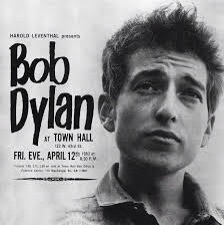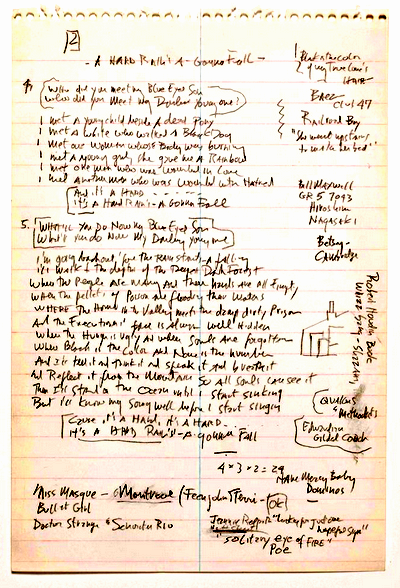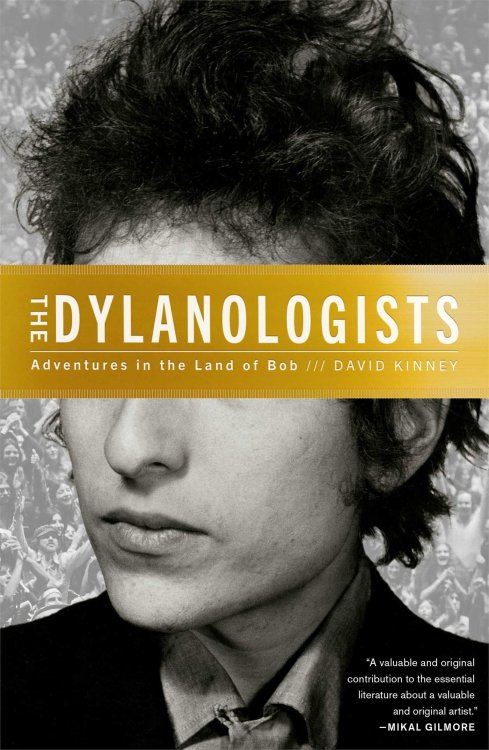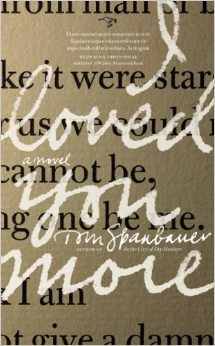
One of our best music critics is Bill Wyman, who wrote an incredible piece about Michael Jackson for the New Yorker in 2012.
I’ve been reading Bill since at least the mid-’90s, and he always has a unique take on the artists and music he writes about.
His latest writing, an essay about Bob Dylan, is in the latest issue of New York magazine and has also been published online at Vulture.
The essay is thoughtful and informed, but I have one big problem with it: the headline.
“How Did Bob Dylan Get So Weird?”
I have two problems with that headline. First, the question asked assumes that Bob Dylan is weird.
And then it implies that Bill’s essay will explain how Bob Dylan went from normal to weird, you know, the way one might explain how a moth becomes a butterfly.
Only as far as I can tell — and this is based on reading everything I’ve been able to get my eyes on that’s been written about Bob Dylan starting in the early ’60s, as well as my one brief meeting with Bob Dylan — he’s not weird.
In fact, I would argue that for someone who has had to deal with international success for over 50 years, who has been accused of everything from being Judas and betraying folk music to inciting racial hatred, Bob Dylan is about as normal as any of us.
I mean how do you define normal?
One could argue — certainly the late Guy Debord would — that nothing about how we live, and nothing about the capitalist system that defines the West has anything to do with normal.
But anyway
One of the big themes regarding Bob Dylan’s so-called weirdness is that he tours all the time. That he practically lives the road.
But why is that a problem. Why does that make him weird?
Bob Dylan is the one who coined the phrase, ‘don’t look back,’ which he used in his song, “She Belongs To Me.”
Remember? “She’s an artist, she don’t look back.”
Dylan took lessons from such fellow travelers as Woody Guthrie and Ramblin’ Jack Elliott and Jack Kerouac.
Kerouac’s “On The Road,” a book about two guys who criss-cross the country many times, has been loved and appreciated by millions.
Weird? To want to wake up to something new every few days? Rather than live in the same rut for decade upon decade. I don’t think so.
From what I’ve read. Bob Dylan had some very dark moments during his life. One came at the end of the ’70s, after his marriage to Sara ended in divorce.
That was when he turned to religion in a way that many of us still find hard to understand. But there’s nothing weird about turning to religion at a time of spiritual crisis.
Millions have done the same.
Bob Dylan also lost his way musically for a while during the ’80s. As Wyman points out, Dylan still managed to write and record great songs during that period, it’s just that most weren’t released on official albums and it’s only been during the ’90s and 2000’s that we’ve gotten to hear such gems as “Blind Willie McTell.”
Wyman argues that the ’80s and ’90s “were tough for him artistically.”
I agree that the ’80s was a bad decade for Dylan, but in the ’90s he made Good as I Been to You and World Gone Wrong and
Time Out of Mind, albums that have gotten rave reviews from most critics including Greil Marcus.
The ’90s turned out to be a great decade for Dylan musically, his comeback decade.
And even the ’80s have turned out to be not a total wipeout. While Dylan’s shows with the Grateful Dead were not so hot, the recordings of his rehearsals with the Dead at Club Front in Marin County in 1987 show him to be in great form. He recorded Oh Mercy in 1989, which got great reviews and is an excellent album.
But what has any of that got to do with weird?
When you headline an article — and Bill Wyman may very well have had nothing to do with the headline — “How Did Bob Dylan Get So Weird?” and then the first graph is some musings about Dylan covering a song made famous by Frank Sinatra, as if that in itself is weird, well is this just a way to sell magazines?
What’s weird is the disconnect between the headline and the article itself.
But then that could just be those pesky editors.
Frankly, that headline doesn’t sound like Bill Wyman to me.
Early on Wyman tells us that Dylan behaves differently than others who are in the “pantheon of great rock stars.”
Duh!
That’s what makes Bob Dylan Bob Dylan. He doesn’t follow the rules. He does what he wants, when he wants and he does it how he wants.
He answers to no one other than himself, far as I can tell.
That’s one of the things that is so great about him.
That’s what I learned from him when I was in my teens.
Here’s a quote from my novel, “True Love Scars,” in which I address that very thing. I’m talking about “Like A Rolling Stone” here:
Somehow that song summed up exactly and for certain how I felt that day, summer of ’65, every loner feeling, every put down I ever suffered, every bit of existential angst, I hear it all in that song and then, top of all that, that Dylan voice which broke every rule which I didn’t actually know back then, but still I knew, in my body I knew, and what I knew was that every damn thing I’d been told was wrong ’cause if a voice like that, all sneer and sarcasm and ragged and strange, could be on Top 40 radio, anything was possible. And all the rules they taught me didn’t mean shit.
I knew.
“How Did Bob Dylan Get Weird”?
Bob Dylan isn’t weird. He’s just living life to the max, on his own terms.
[In August of this year I’ll be publishing my rock ‘n’ roll/ coming-of-age novel, “True Love Scars,” which features a narrator who is obsessed with Bob Dylan. To read the first chapter, head here.
Or watch an arty video with audio of me reading from the novel here.
–- A Days of the Crazy-Wild blog post: sounds, visuals and/or news –-








